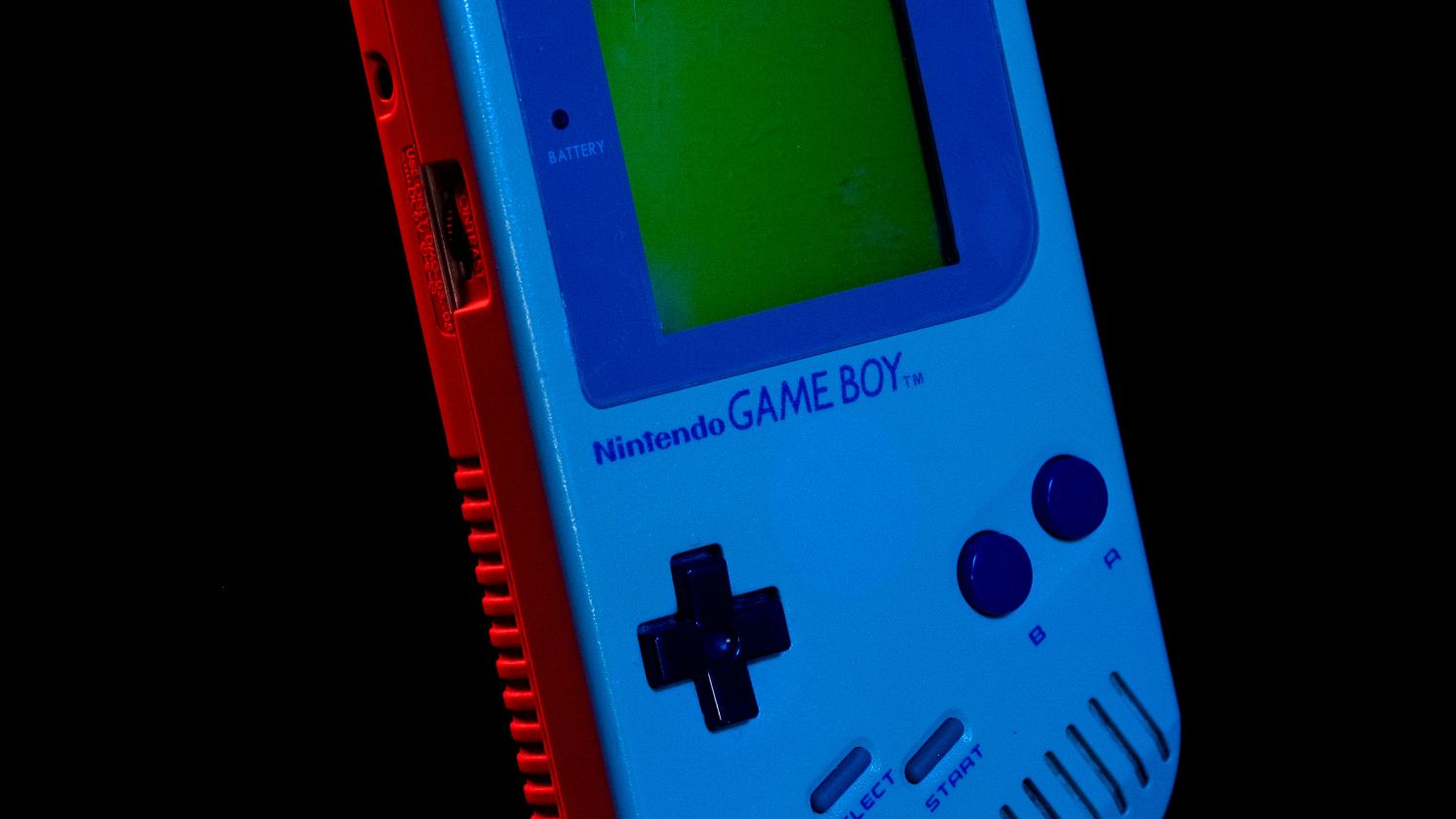Share The Joystick And The Joy
Beyond entertainment, video games are shared experiences, passed down like favorite stories or classic toys. For parents raised on pixelated adventures and 16-bit soundtracks, introducing your kids to your childhood games can be something truly special. Many titles offer more than nostalgia—they’re fun and surprisingly thoughtful in how they teach problem-solving or creativity. Here is a throwback to 20 games that your kids can enjoy today.
1. Super Mario Bros. (NES, 1985)
Super Mario Bros.’s simple two-button controls make it highly accessible for young players. By introducing the side-scrolling platformer genre, this game set a foundation for modern platform games. Players can use warp zones to skip worlds, and this encourages exploration and discovery.
 Super Mario Bros. (1985) Full Walkthrough NES Gameplay [Nostalgia] by Pii89
Super Mario Bros. (1985) Full Walkthrough NES Gameplay [Nostalgia] by Pii89
2. The Legend Of Zelda (NES, 1986)
One of the first games with a battery-backed save system, The Legend of Zelda allowed long-term adventure play. It also brought non-linear, open-world exploration, perfect for kids who love to roam freely. Completing the game reveals a secret "Second Quest."
 The Legend of Zelda (NES) - 100% Full Game Walkthrough by YTSunny
The Legend of Zelda (NES) - 100% Full Game Walkthrough by YTSunny
3. Tetris (Game Boy, 1989)
Tetris has been played on everything from calculators to the side of a skyscraper, and with its intuitive puzzle mechanics, it helped make the Game Boy a global success. Simple rules and universal appeal make it perfect for developing spatial reasoning in kids.
 GameBoy Game: Tetris (1989 Nintendo) (Super Gameboy version) by Old Classic Retro Gaming
GameBoy Game: Tetris (1989 Nintendo) (Super Gameboy version) by Old Classic Retro Gaming
4. Pac-Man (Arcade, 1980)
Teaching pattern recognition and timing, Pac-Man’s ghost AI offers diverse challenges. The game became a global phenomenon by introducing maze-based gameplay in a non-violent format. It also inspired a top-10 hit song and a popular Saturday morning cartoon in the ’80s.
 Arcade Game: Pac-Man (1980 Namco (Midway License for US release)) by Old Classic Retro Gaming
Arcade Game: Pac-Man (1980 Namco (Midway License for US release)) by Old Classic Retro Gaming
5. Sonic The Hedgehog (Genesis, 1991)
Originally named “Mr. Needlemouse” during its early development stages, Sonic popularized fast-paced platforming with momentum-based mechanics and loop-de-loops. The collectible rings system introduced a unique twist on player health, and the game introduced the concept of "blast processing" in Sega’s marketing war with Nintendo.
 Longplay of Sonic the Hedgehog (1991) by LongplayArchive
Longplay of Sonic the Hedgehog (1991) by LongplayArchive
6. Pokémon Red/Blue (Game Boy, 1996)
Turn-based battles and collectible monster mechanics that revolutionized RPGs for kids were introduced by Pokémon Red/Blue. Link cable trading encouraged real-world social interaction and teamwork, and the Pokémon franchise became the highest-grossing media franchise in history.
 POKEMON RED AND BLUE (Gameboy) 1996 - GAME REVIEW by Jammo
POKEMON RED AND BLUE (Gameboy) 1996 - GAME REVIEW by Jammo
7. Mario Kart 64 (N64, 1996)
This game balanced competitive play with accessible mechanics suitable for all ages. It also brought kart racing to a new level with a four-player split-screen fun and item-based strategy. The infamous blue shell from this game became a symbol of chaotic fairness.
 Mario Kart 64 - Full Game Walkthrough by packattack4082
Mario Kart 64 - Full Game Walkthrough by packattack4082
8. Kirby’s Dream Land (Game Boy, 1992)
Named after a Nintendo lawyer who defended the company in a lawsuit, it introduced the character Kirby and featured easy, float-based platforming ideal for younger gamers. Kirby’s Dream Land pioneered inhale-and-spit mechanics that made gameplay both fun and forgiving.
 Playthrough : Kirby's Dream Land (Game Boy, 1992) - Full Game by RetroGreg
Playthrough : Kirby's Dream Land (Game Boy, 1992) - Full Game by RetroGreg
9. Mega Man 2 (NES, 1988)
Mega Man 2 refined the action-platformer genre with non-linear stage selection and themed bosses. The weapon-copy mechanic rewarded strategic thinking and experimentation. Many of the Robot Masters were based on fan-submitted designs, and its Metal Blade is so powerful it’s often considered “broken.”
10. Donkey Kong (Arcade, 1981)
Not only did Donkey Kong launch the career of Mario (then Jumpman), but it also pioneered vertical platforming gameplay. This was one of the earliest games with a visual narrative and distinct level progression. The game's level transitions introduced cut scenes long before they were standard.
 Donkey Kong (Original) Full Playthrough (JP Arcade Version) by Carls493
Donkey Kong (Original) Full Playthrough (JP Arcade Version) by Carls493
11. Luigi’s Mansion (GameCube, 2001)
This is the only Mario-related game where screams increase the in-game timer instead of decreasing it. It put Luigi in the spotlight with kid-friendly ghost-hunting gameplay and puzzle-solving. Also, it combined light-based mechanics with a haunted mansion theme, perfect for curious minds.
 GameCube Longplay - Luigi's Mansion by World of Longplays
GameCube Longplay - Luigi's Mansion by World of Longplays
12. Animal Crossing (GameCube, 2001)
With real-time gameplay tied to the system clock, Animal Crossing created daily reasons to check-in. Creativity and patience were encouraged through home customization and social interaction. The in-game debt system teaches financial literacy with a raccoon banker named Tom Nook.
 Animal Crossing Gameplay [GameCube] by The Silent Gaming Fish
Animal Crossing Gameplay [GameCube] by The Silent Gaming Fish
13. Yoshi’s Island (SNES, 1995)
Yoshi’s Island introduced Yoshi’s solo mechanics, including flutter jumps and egg throws, which offered a gentler learning curve for young players. Besides using the Super FX2 chip to create sprite-scaling effects, the game’s vibrant, hand-drawn art style stood out and appealed strongly to children’s visual imagination.
 [Longplay] SNES - Super Mario World 2: Yoshi's Island [100%] (HD, 60FPS) by xRavenXP
[Longplay] SNES - Super Mario World 2: Yoshi's Island [100%] (HD, 60FPS) by xRavenXP
14. Crash Bandicoot (PS1, 1996)
One of the first successful 3D platformers on console, it introduced kids to obstacle-dodging in narrow tunnel-style levels. Its simple jump/spin controls and colorful characters made it an accessible entry point for younger gamers. Crash ended up becoming PlayStation’s first unofficial mascot.
 Crash Bandicoot 1996 | Full Game 100% by TheMoonRover
Crash Bandicoot 1996 | Full Game 100% by TheMoonRover
15. Rayman (PS1, 1995)
Rayman’s inventive combat and smooth animation brought a whimsical alternative to traditional platformers for younger audiences. The character having no limbs was a clever workaround for sprite animation on limited hardware. Its charming art and difficulty scaling made it a family-friendly yet challenging experience for kids.
 Rayman Longplay (PlayStation) [4K] by AL82 Retrogaming Longplays
Rayman Longplay (PlayStation) [4K] by AL82 Retrogaming Longplays
16. Banjo-Kazooie (N64, 1998)
The game combined platforming and exploration with dual-character puzzle-solving, offering cognitive variety for kids. Collectible-based progression encouraged observation, planning, and patience in young players. Plus, Banjo’s backpack and Kazooie’s snarky personality added a layer of humor that appealed to all ages.
 Nintendo 64 - Banjo Kazooie © 1998 Nintendo - Gameplay by The VideoGames Museum
Nintendo 64 - Banjo Kazooie © 1998 Nintendo - Gameplay by The VideoGames Museum
17. Spyro The Dragon (PS1, 1998)
Spyro’s gliding and fire-breath mechanics delivered freeform 3D movement in accessible, non-linear levels. Originally green, Spiro was changed to purple to stand out against grass textures. The game’s vivid visuals and friendly difficulty made it ideal for introducing kids to 3D navigation.
18. Pikmin (GameCube, 2001)
This game taught real-time strategy through simple commands and a clear goal, which is great for kids developing planning skills. Its charming plant-like creatures and nature-based puzzles made resource management fun and non-threatening. With a 30-day time limit, the original game subtly teaches decision-making and prioritization.
 GameCube - Pikmin © 2001 Nintendo - Gameplay by The VideoGames Museum
GameCube - Pikmin © 2001 Nintendo - Gameplay by The VideoGames Museum
19. Star Fox 64 (N64, 1997)
Star Fox 64 introduced kids to 3D rail-shooter gameplay with tight controls and fast-paced action across space views. Debuting the Rumble Pak, it became the first console game with force feedback, which increased immersion. The iconic “Do a barrel roll!” line became a viral meme.
 STAR FOX 64 N64 (1997) by Played it Before
STAR FOX 64 N64 (1997) by Played it Before
20. DuckTales (NES, 1989)
This game transformed a beloved cartoon into a top-tier platformer, bringing licensed games that were actually fun. Its 2013 remaster preserved the original levels but reanimated the game in HD with the original voice actors. The pogo-cane mechanic was both innovative and intuitive and gave kids satisfying control.
 DuckTales (1989) - Nintendo - Gameplay by VICIOGAME Retro Games
DuckTales (1989) - Nintendo - Gameplay by VICIOGAME Retro Games










